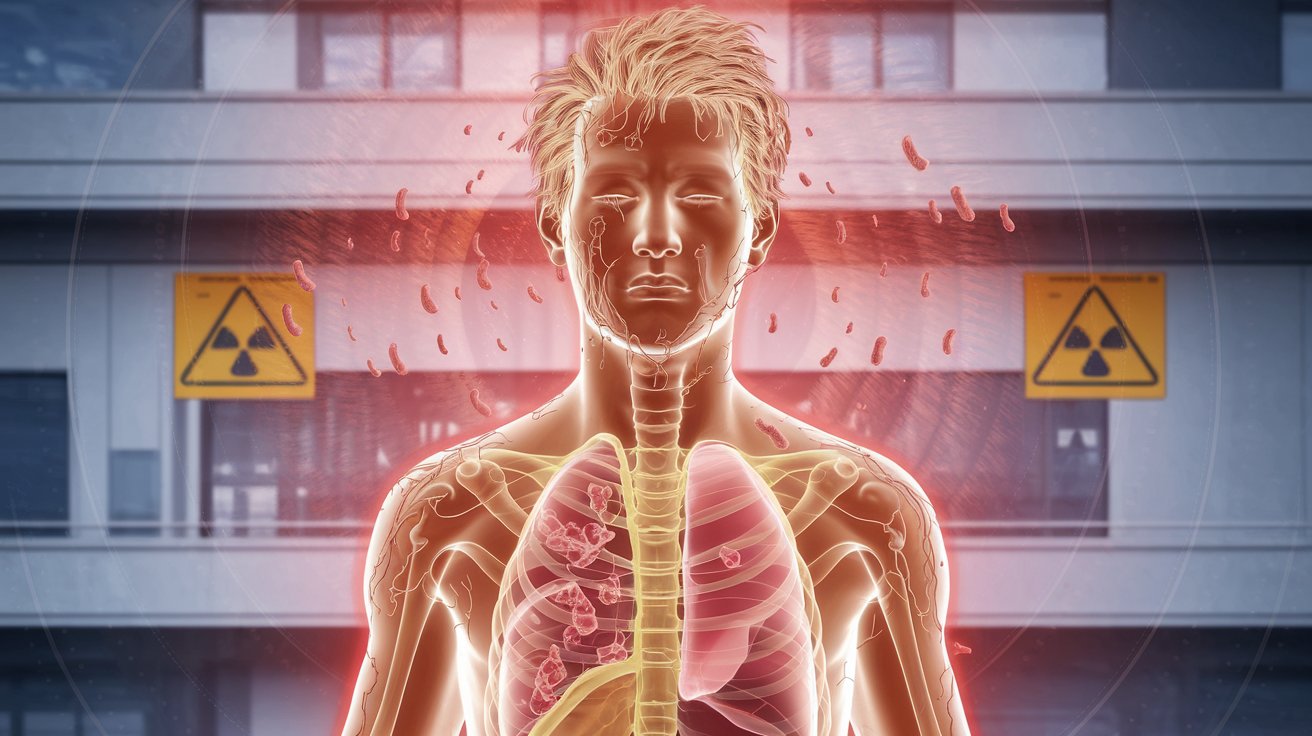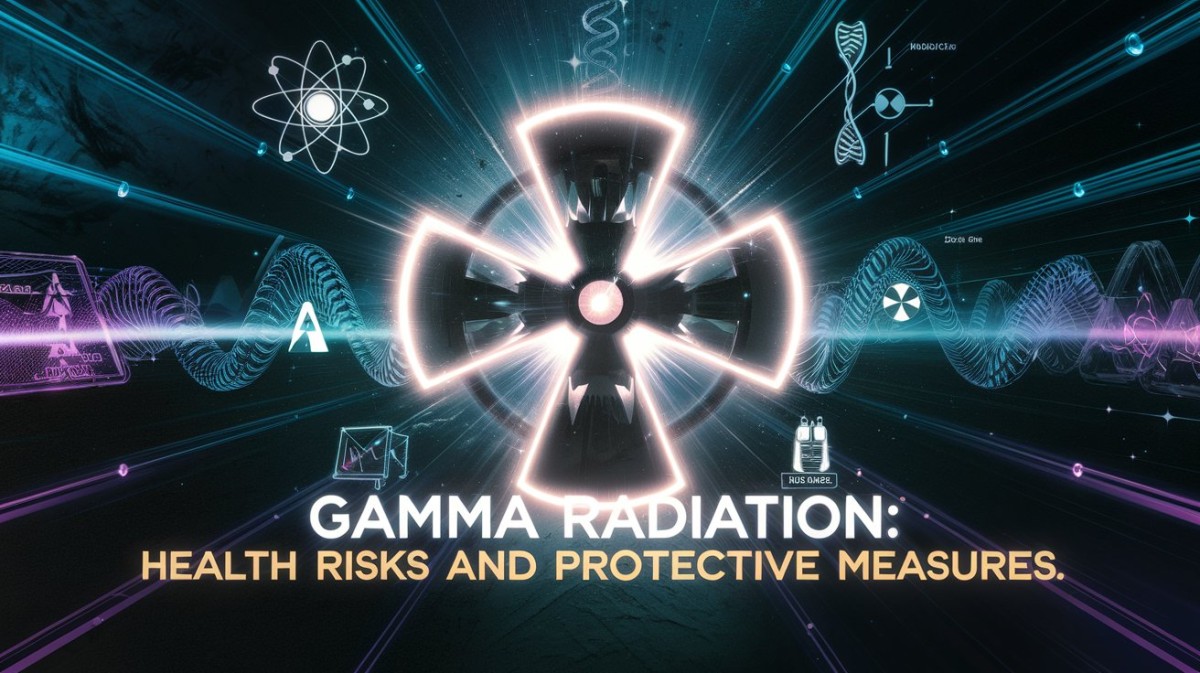Gamma rays are a form of electromagnetic radiation with high penetration power which are emitted during the processes of radioactive decay. Though gamma radiation is used by doctors, in industries and many other fields, the exposure to it is lethal. The dangers of exposure to gamma radiation are acute radiation sickness, chronic conditions, and carcinogenesis; all of these dangers are important for anyone who may be exposed to gamma radiation in his or her environment.
What is Gamma Radiation?

Gamma rays are emitted when certain elements in an atom are radioactive and energy is released by the unstable nuclei in order to attain a stable state. While alpha and beta radiations consist of particles, gamma radiation is made up of photons, that is, energy particles which lack mass and are in motion at the velocity of light. They are characterised by high penetration energy and short wavelength that enables them to pass through different materials including the human tissue.
Sources of Gamma Radiation

Gamma radiation can originate from both natural and artificial sources:
> Natural Sources: These include cosmic rays from outer space, radioactive isotopes from the soil, rocks, and even certain foods. Some of the familiar terrestrial isotopes that release gamma rays are potassium-40 and radon-222.
> Artificial Sources: Gamma radiation is used in medical therapies such as radiotherapy, diagnostic procedures, nuclear energy generation and in event of an atomic accident or explosion.
Acute Health Effects of Gamma Radiation Exposure

Acute Radiation Syndrome (ARS) develops after the person is exposed to a large amount of ionising radiation within a short time. Symptoms can manifest within hours or days after exposure and may include:
1. Nausea and Vomiting: One of the first recognisable symptoms of ARS, which may develop within minutes to hours after the exposure.
2. Fatigue: Some of the changes include fatigue that might occur to an individual due to the body’s effort in combating cellular damage.
3. Skin Burns: The consequences of high exposure include skin reddening or irritation, rashes, blistering, or peeling, resembling severe sunburn.
4. Hair Loss: The cancer causing rays can have effects on the follicle and result in hair loss, either temporary or permanent depending on the degree of exposure.
5. Organ Damage: High levels of gamma radiation can damage internal organs, particularly the bone marrow, which is crucial for blood cell production.
The severity of ARS symptoms depends on the dose received; doses above 1 Gy (grey) can lead to significant health complications and potentially be fatal if not treated promptly.
Long-Term Health Effects

Long-term exposure to gamma radiation increases the risk of developing chronic health conditions, particularly cancer. The following are key points regarding these risks:
1. Cancer Risk
Gamma radiation is classified as a carcinogen due to its ability to damage DNA within cells. The risk of cancer increases with both the dose and duration of exposure. Studies have shown that individuals exposed to high levels of gamma radiation have higher incidences of various cancers, including:
- Leukemia: This blood cancer has been strongly associated with ionizing radiation exposure.
- Thyroid Cancer: Exposure can lead to thyroid dysfunction and increase the risk of thyroid tumors.
- Solid Tumors: Cancers such as breast, lung, and skin cancers have been linked to prolonged exposure to gamma radiation.
2. Genetic Mutations
Ionizing radiation can cause mutations in DNA that may be passed on to future generations. These mutations can lead to hereditary conditions or increase susceptibility to certain diseases in offspring.
3. Cardiovascular Diseases
Emerging research suggests that long-term exposure to ionizing radiation may also increase the risk of cardiovascular diseases due to damage to blood vessels and heart tissue.
Mechanisms of Damage

The health effects of gamma radiation are primarily due to its ionizing properties:
> DNA Damage: Gamma rays can cause direct ionization of DNA molecules or generate free radicals that indirectly damage DNA. This damage can result in mutations if not properly repaired by cellular mechanisms.
> Cellular Response: When cells detect DNA damage, they activate repair pathways. However, if the damage is extensive or the repair mechanisms fail, it may lead to cell death or uncontrolled cell division (cancer).
Safety Measures Against Gamma Radiation Exposure

Given the potential health risks associated with gamma radiation exposure, it is essential to implement safety measures:
1. Shielding: Use dense materials such as lead or concrete for shielding against gamma rays in environments where exposure is possible.
2. Distance: Maintain a safe distance from sources of gamma radiation whenever feasible; the intensity decreases significantly with increased distance.
3. Time Management: Limit the duration of exposure by minimizing time spent near radioactive sources.
4. Monitoring Devices: Use dosimeters or other monitoring devices in workplaces where gamma radiation is present to track exposure levels effectively.
5. Education and Training: Ensure that individuals working with or around radioactive materials receive proper training on safety protocols and emergency procedures.
Conclusion
Understanding the health effects associated with gamma radiation exposure is critical for individuals who may encounter this type of radiation in their daily lives or professions. Acute effects such as nausea, fatigue, skin burns, and organ damage highlight the immediate dangers posed by high doses of gamma rays. In contrast, long-term risks—including increased cancer susceptibility—underscore the importance of minimizing exposure through effective safety measures.
As technology advances and our understanding of ionizing radiation improves, ongoing education about the risks associated with gamma radiation will be vital for public health and safety. By implementing protective strategies and remaining informed about potential hazards, individuals can better safeguard themselves against the adverse effects of gamma radiation while benefiting from its valuable applications in medicine and industry.

